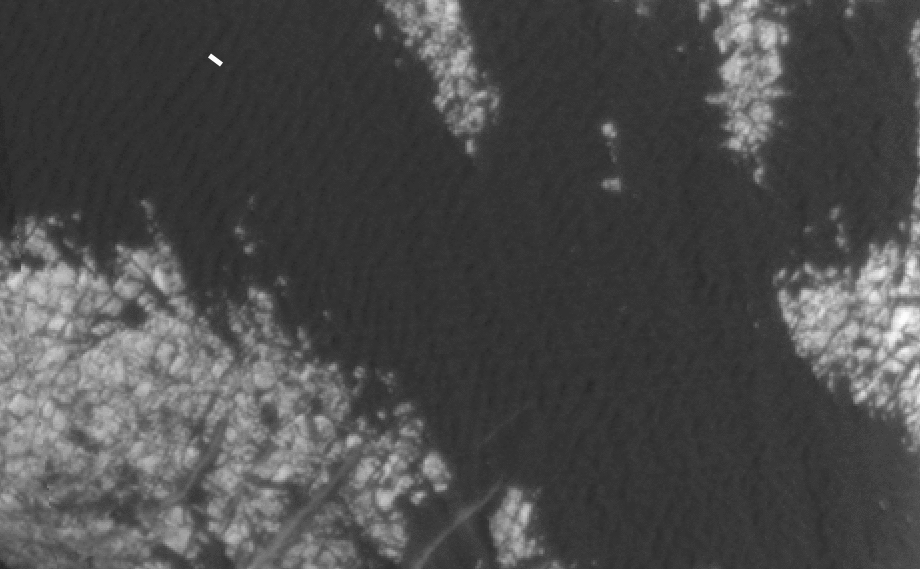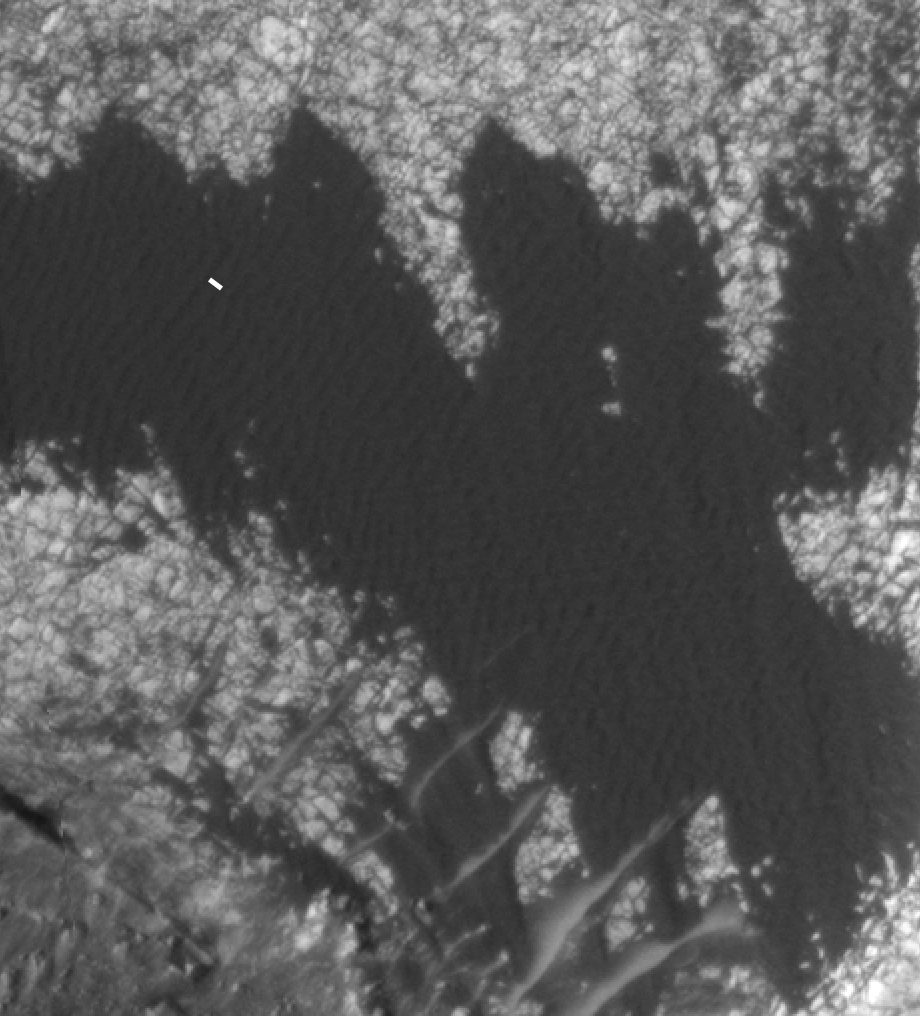Blowing in the Martian Wind

| Credit | NASA/JPL-Caltech/Univ. of Ariz./JHUAPL |
|---|---|
| Language |
|
A rippled patch of sand in Becquerel Crater on Mars moved about two meters (about two yards) between November 24, 2006 and September 5, 2010, as observed in these images taken by NASA's Mars Reconnaissance Orbiter. The white line tracks the displacement between two ripples. Becquerel Crater is located just north of the equator in the Arabia Terra region.
This is one of several sites where the orbiter has observed shifting sand dunes and ripples. Previously, scientists thought sand on Mars was mostly immobile. It took the mission's High Resolution Imaging Science Experiment (HiRISE) to take sharp enough images to finally see the movement.
While dust is easily blown around the Red Planet, its thin atmosphere means that strong winds are required to move grains of sand.
The Mars Reconnaissance Orbiter is managed by NASA's Jet Propulsion Laboratory for NASA's Science Mission Directorate in Washington. The University of Arizona's Lunar and Planetary Laboratory operates HiRISE. The camera was built by Ball Aerospace & Technologies Corp. in Boulder, Colo. Johns Hopkins University Applied Physics Laboratory in Laurel, Md., provided and operates CRISM. JPL is a division of the California Institute of Technology in Pasadena.

